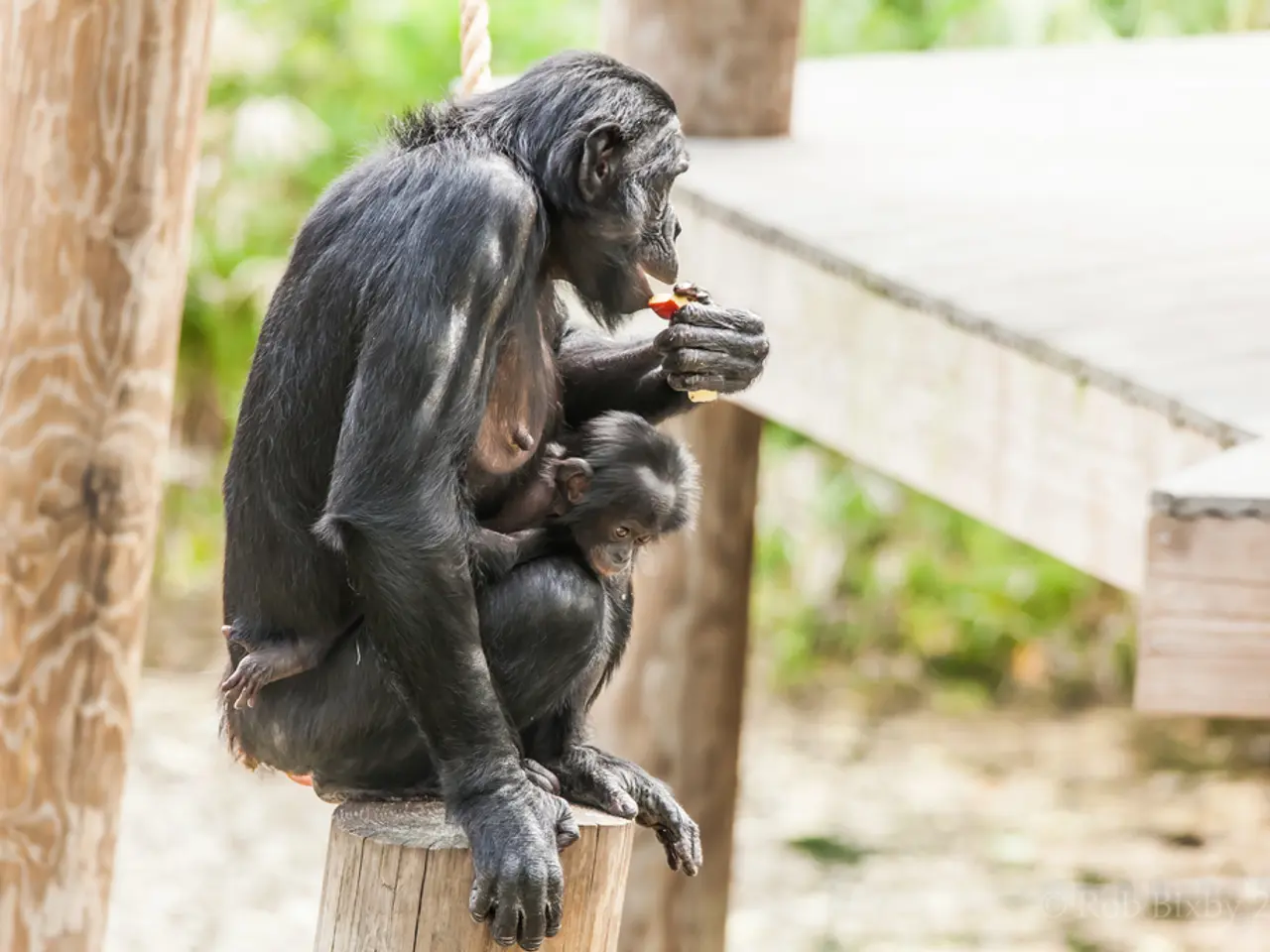Closely-related primates to humans, specifically chimpanzees residing in the West, share a significant genetic connection.
The western chimpanzee, a remarkable species closely related to human beings, shares over 98% of our DNA. This charismatic primate, found in Liberia, Sierra Leone, Guinea-Bissau, and the largest population in Côte d'Ivoire, is a top predator, seed disperser, and pest control in its ecosystem. However, it is currently critically endangered due to habitat loss from deforestation and the expansion of human agriculture.
This species is genetically and behaviorally very distinct, having been isolated for over half a million years. Western chimpanzees have black hair covering their entire body, hands, and feet, and they possess opposable thumbs. Males have a head-to-rump length of 77-96 centimeters and a weight of 47 kilograms, while females are slightly smaller.
Western chimpanzees have a diet that is mostly fruit and meat. Over half of their diet comprises fruit, and they prey on other primates like green monkeys, patas monkeys, and Guinea baboons, while females primarily hunt Senegal bushbabies and banded mongooses. They are known to collect fermented alcoholic sap from palm trees in leaves and seem to enjoy its intoxicating effects.
One of the most fascinating aspects of western chimpanzees is their intelligence. Washoe, a wild-born chimpanzee, was taught sign language for a time by two researchers from the University of Nevada, Allen and Beatrix Gardner. Washoe learned 350 signs of sign language and passed them down to her offspring.
Western chimpanzees also exhibit complex social structures. Males have a more hierarchical society, but females often team up with each other in conflicts with males. Both sexes in western chimpanzee societies will adopt orphan infants.
A female western chimpanzee gives birth to a single infant after an eight-month gestation period and cares for it until it reaches around four years old. Western chimpanzees serve as a top predator in their ecosystem, but they also face numerous threats.
Today, western chimpanzees are critically endangered. All chimpanzees are protected by national and international laws, but enforcement remains an ongoing challenge. These remarkable creatures, our close relatives, are in dire need of our protection and conservation efforts.
In a unique display of intelligence and culture, western chimpanzees use wooden spears for hunting and teach younger chimpanzees how to make and operate them. They have been observed throwing large rocks into hollow tree stumps or against trees, a behavior that may be a form of competitive sport. Western chimpanzees also use plants as medicine, consuming certain leaves to alleviate stomach issues and eliminate parasitic worms.
The story of the western chimpanzee is one of evolutionary isolation, intelligence, and resilience. But it is also a story of crisis and the urgent need for conservation. These remarkable creatures, our close relatives, deserve our attention and our efforts to ensure their survival for future generations.
Read also:
- Peptide YY (PYY): Exploring its Role in Appetite Suppression, Intestinal Health, and Cognitive Links
- Toddler Health: Rotavirus Signs, Origins, and Potential Complications
- Digestive issues and heart discomfort: Root causes and associated health conditions
- House Infernos: Deadly Hazards Surpassing the Flames








